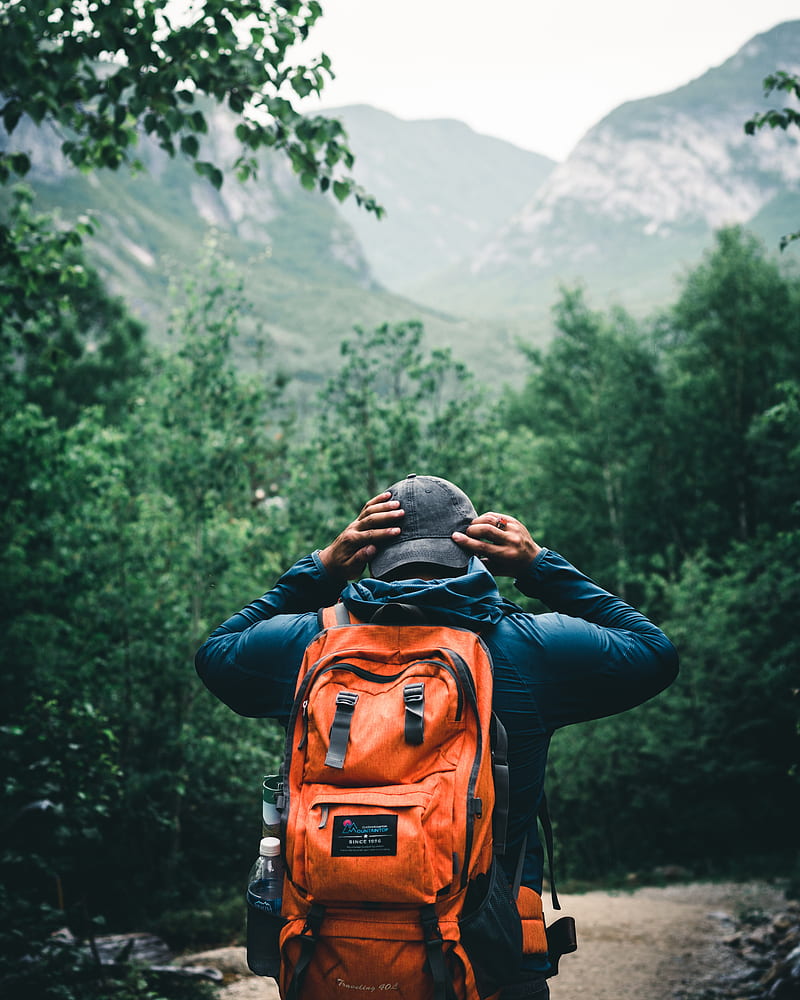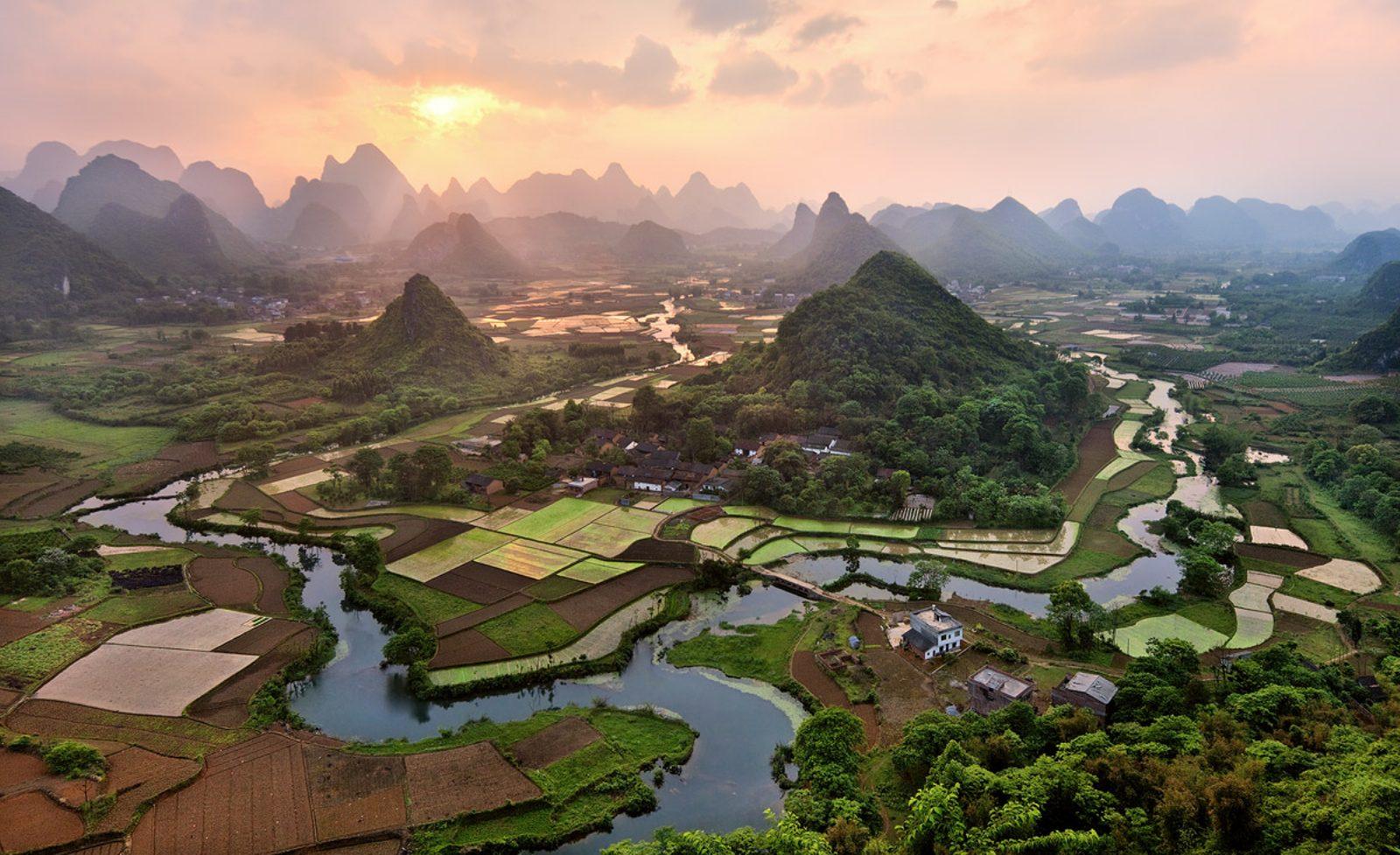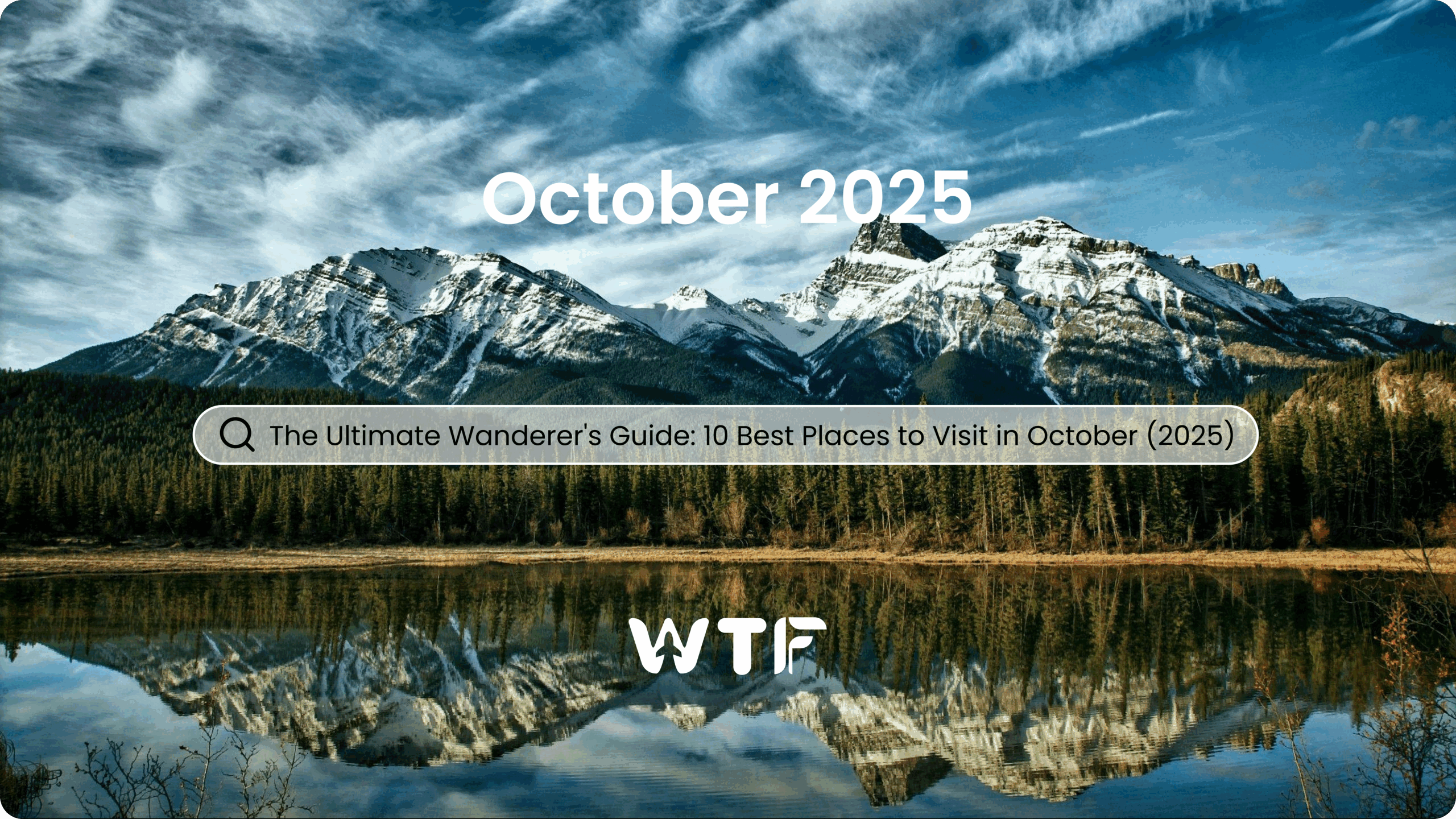Welcome to WanderingTooFar community, collections of Travel Blogs. Today, we are gonna embark on a journey to uncover the hidden gems of the world. Today, we set our sights on Benin, a country steeped in history and culture nestled in the heart of West Africa. Join us as we delve into the rich tapestry of Benin’s past, explore its vibrant traditions, and unearth the allure of its modern-day marvels. From the ancient Kingdom of Dahomey to the bustling streets of Cotonou, prepare to be captivated by the enchanting charm of Benin.
Overview of Benin:
Benin, officially known as the Republic of Benin, is a country located in West Africa. It shares borders with Togo to the west, Nigeria to the east, Burkina Faso to the northwest, and Niger to the northeast. To the south, it has a coastline along the Gulf of Guinea, providing access to the Atlantic Ocean.
Here are some interesting facts and statistics about Benin:
- Capital: The capital city of Benin is Porto-Novo, but the largest city and economic hub is Cotonou.
- Population: As of the latest available data, Benin has a population of approximately 12 million people.
- Languages: The official language of Benin is French, inherited from its colonial history. However, several indigenous languages are also spoken, including Fon, Yoruba, and Bariba.
- Religion: The majority of the population in Benin practices Christianity, Islam, or indigenous African religions. Voodoo, an animistic religion, also has a significant presence in the country and is recognized as an official religion.
- Independence: Benin gained independence from France on August 1, 1960, becoming the Republic of Benin.
- UNESCO World Heritage Sites: Benin is home to two UNESCO World Heritage Sites: the Royal Palaces of Abomey and the Pendjari National Park. These sites highlight the country’s rich cultural and natural heritage.
- Economy: Benin’s economy relies heavily on agriculture, with cotton being one of its major cash crops. The country also has significant potential for tourism due to its cultural sites and natural attractions.
- Political System: Benin is a democratic republic with a multi-party political system. It has a president who serves as the head of state and a prime minister who serves as the head of government.
- Art and Culture: Benin has a vibrant artistic and cultural scene, with traditional crafts such as pottery, weaving, and woodcarving being highly valued. The country is also known for its music and dance traditions, which often incorporate elements of storytelling and spirituality.
- Flag: The flag of Benin consists of two horizontal bands of yellow (top) and red (bottom) with a green vertical band on the hoist side. The green symbolizes hope and revival, the yellow represents the wealth of the country, and the red symbolizes the courage of its people.
Benin holds significant historical and cultural importance in West Africa. It was once home to the powerful Kingdom of Dahomey, which flourished in the 17th to 19th centuries. The Dahomey Kingdom was known for its military prowess, administrative efficiency, and vibrant culture. Today, remnants of this rich heritage can be seen in the country’s art, music, and traditions. In addition to its historical significance, Benin plays a crucial role in the economic landscape of West Africa. It is a major hub for trade and commerce in the region, with its port city of Cotonou serving as one of the busiest in West Africa. Agriculture also forms a significant part of Benin’s economy, with crops such as cotton, cocoa, and palm oil being major exports.
Benin’s Legacy: How Did History Shape its Vibrant Culture?
Historical Background:
Pre-Colonial History:
The pre-colonial history of Benin is marked by the rise and fall of powerful kingdoms, most notably the Kingdom of Dahomey. The Kingdom of Dahomey emerged in the early 17th century in present-day southern Benin. It grew to become a dominant regional power through conquest and trade. Dahomey was known for its highly organized military, centralized government, and sophisticated administrative system. The kingdom also engaged in the transatlantic slave trade, which brought wealth and influence to its rulers. Despite its military prowess, Dahomey eventually declined in the late 19th century due to internal strife and external pressure from European colonial powers.
Impact of Colonialism and Struggle for Independence:
Benin’s encounter with European colonial powers began in the late 19th century with the arrival of French traders and missionaries. By the late 19th century, France had established colonial control over much of present-day Benin, incorporating it into French West Africa. The colonial period brought significant changes to Benin, including the imposition of European political and economic systems, the exploitation of natural resources, and the introduction of Christianity and Western education. Benin’s struggle for independence gained momentum in the mid-20th century, inspired by nationalist movements across Africa. Key figures such as Hubert Maga, Sourou-Migan Apithy, and Justin Ahomadegbé-Tomêtin played crucial roles in advocating for self-determination. On August 1, 1960, Benin finally achieved independence from France, becoming the Republic of Benin.
Key Historical Events Shaping Identity:
- Abolition of the Kingdom of Dahomey: The end of the Kingdom of Dahomey marked a significant shift in Benin’s political landscape, leading to the establishment of a French colonial administration.
- Nationalist Movements: The emergence of nationalist movements in the mid-20th century paved the way for Benin’s independence struggle and shaped the country’s identity as a sovereign nation.
- Marxist-Leninist Era: Following independence, Benin underwent a period of Marxist-Leninist rule under President Mathieu Kérékou, which lasted from 1972 to 1990. This era left a lasting impact on Benin’s political and economic ideologies.
- Transition to Democracy: Benin made a peaceful transition to democracy in the early 1990s, establishing a multi-party political system and fostering political stability. This period reinforced Benin’s identity as a democratic nation in Africa.
These historical events have played a significant role in shaping Benin’s identity as a nation with a rich cultural heritage, a commitment to democracy, and a resilience forged through struggles for independence and self-determination.
Culture and Traditions:
Music, Dance, and Art:
Benin’s cultural landscape is enriched by its vibrant music, dance, and art forms. Traditional music often features drums, flutes, and string instruments, blending rhythmic patterns with captivating melodies. Dance is an integral part of Beninese culture, with various styles reflecting different occasions and social contexts. Traditional art, including sculpture, pottery, and textile weaving, showcases the country’s artistic prowess and often incorporates themes from mythology, folklore, and daily life.
Traditional Religious Practices:
Benin has a diverse religious landscape, with traditional African religions, Christianity, and Islam coexisting harmoniously. Traditional religious practices, often centered around voodoo (or Vodun), hold significant cultural and spiritual importance in Beninese society. Voodoo rituals involve invoking spirits, ancestor worship, and ceremonies to seek guidance, protection, and healing. Despite misconceptions, voodoo is deeply ingrained in Benin’s cultural fabric and is practiced alongside other faiths.
Unique Customs and Rituals:
Benin is renowned for its rich tapestry of customs and rituals that reflect its cultural diversity and historical heritage. One notable tradition is the annual Voodoo Festival (Fête du Vodoun), celebrated on January 10th each year, which draws devotees and spectators from across the country and beyond. During the festival, elaborate ceremonies, dances, and sacrifices honor the voodoo deities and ancestors, fostering community cohesion and spiritual renewal.
Other unique customs include rites of passage ceremonies marking significant life events such as birth, initiation into adulthood, marriage, and death. These ceremonies often involve communal celebrations, symbolic rituals, and traditional practices passed down through generations, reinforcing cultural identity and social bonds.
Which of Benin’s Top 5 Attractions Should Be Your Next Adventure?
1. Royal Palaces of Abomey:
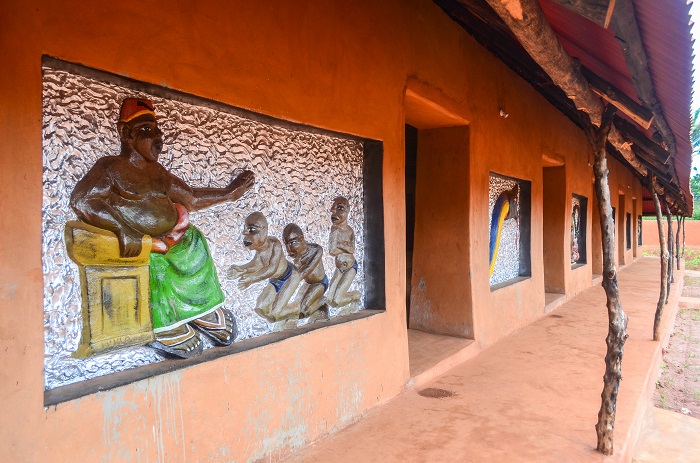
The Royal Palaces of Abomey are a UNESCO World Heritage Site, comprising a series of intricately designed mud-brick structures that served as the seat of the powerful Kingdom of Dahomey. Each palace within the complex has its own historical significance, showcasing the architectural prowess and cultural heritage of the Dahomey people.
- How to Get There:
- Public Transport: From Cotonou, travelers can take a bus or shared taxi to Abomey, which is approximately 150 kilometers away. The journey takes about 2.5 to 3 hours depending on traffic and road conditions.
- Private Transport: Alternatively, visitors can hire a private taxi or car for a more direct and comfortable journey to Abomey.
- Transportation Cost: Public transport typically costs around XOF 2,000-3,000 (USD 3-5) per person, while hiring a private taxi may range from XOF 30,000-40,000 (USD 50-70) for the trip from Cotonou to Abomey.
- Must-Do Activities: Guided tours of the palaces, exploring the museum exhibits showcasing artifacts and historical relics, and witnessing traditional ceremonies or cultural performances if available.
- Entrance Fee: The entrance fee to the Royal Palaces of Abomey complex is approximately XOF 5,000-7,000 (USD 8-12) per person.
2. Pendjari National Park:
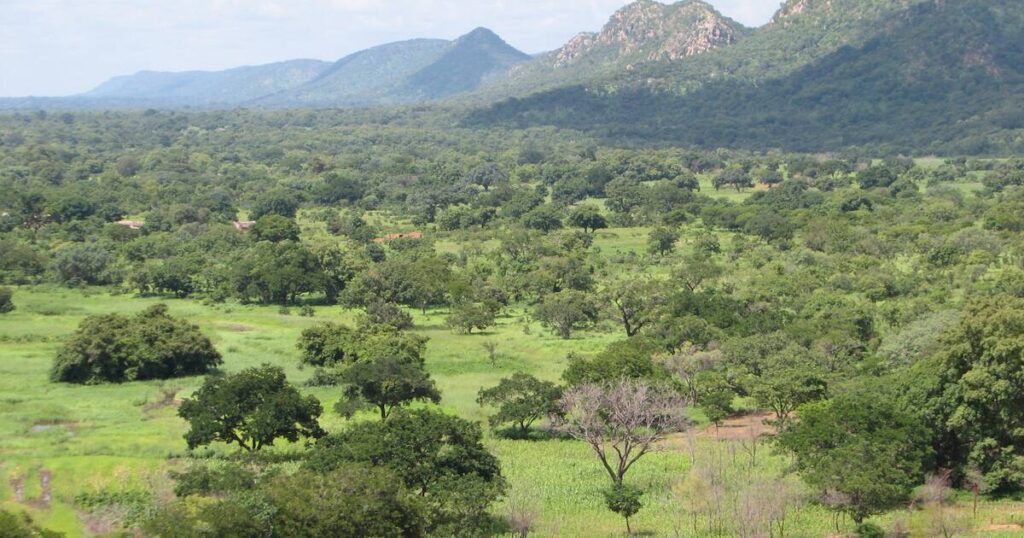
Pendjari National Park is one of West Africa’s premier wildlife reserves, boasting diverse ecosystems and abundant wildlife species. Visitors can embark on thrilling safari drives to spot elephants, lions, buffalo, and numerous bird species amidst stunning landscapes.
- How to Get There:
- Public Transport: From Cotonou, travelers can take a bus or shared taxi to Natitingou, which is approximately 600 kilometers away. From Natitingou, arrangements can be made for transport to Pendjari National Park.
- Private Transport: Alternatively, visitors can hire a private car or join a guided tour from Cotonou for a more convenient and direct journey to the park.
- Transportation Cost: Public transport from Cotonou to Natitingou typically costs around XOF 10,000-15,000 (USD 17-25) per person. Private tours to Pendjari National Park can range from XOF 100,000-150,000 (USD 170-250) per person.
- Must-Do Activities: Safari drives to observe wildlife in their natural habitat, guided nature walks to explore the park’s scenic beauty and learn about local flora and fauna, and camping under the stars for an immersive wilderness experience.
- Entrance Fee: The entrance fee to Pendjari National Park is approximately XOF 10,000-15,000 (USD 17-25) per person.
3. Ouidah:
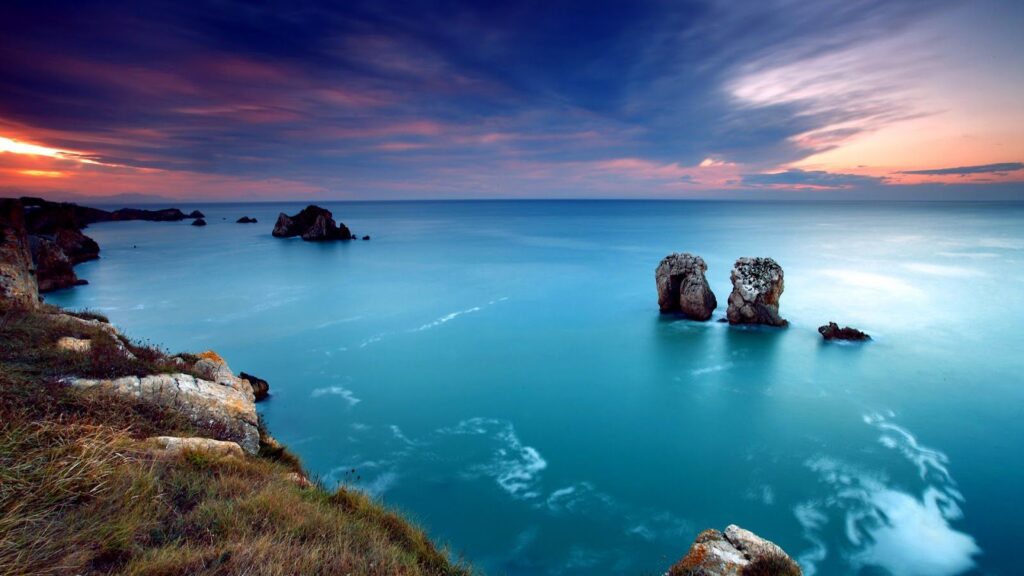
Ouidah is a historic coastal town with significant cultural and historical importance. It is renowned for its connections to the transatlantic slave trade and is home to landmarks such as the Door of No Return, which symbolizes the departure of enslaved Africans.
- How to Get There:
- Public Transport: From Cotonou, travelers can take a bus or shared taxi to Ouidah, which is approximately 40 kilometers away. The journey takes about 45 minutes to 1 hour depending on traffic.
- Private Transport: Alternatively, visitors can hire a private taxi or car for a quicker and more personalized journey to Ouidah.
- Transportation Cost: Public transport from Cotonou to Ouidah typically costs around XOF 1,000-2,000 (USD 2-3) per person, while a private taxi may charge around XOF 10,000-15,000 (USD 17-25) for the trip.
- Must-Do Activities: Visiting the Door of No Return and other historic landmarks, exploring the Sacred Forest and learning about traditional voodoo practices, and attending the annual Voodoo Festival if timing allows.
- Entrance Fee: Some sites in Ouidah may have nominal entrance fees, typically ranging from XOF 1,000-2,000 (USD 2-3) per person.
4. Ganvie
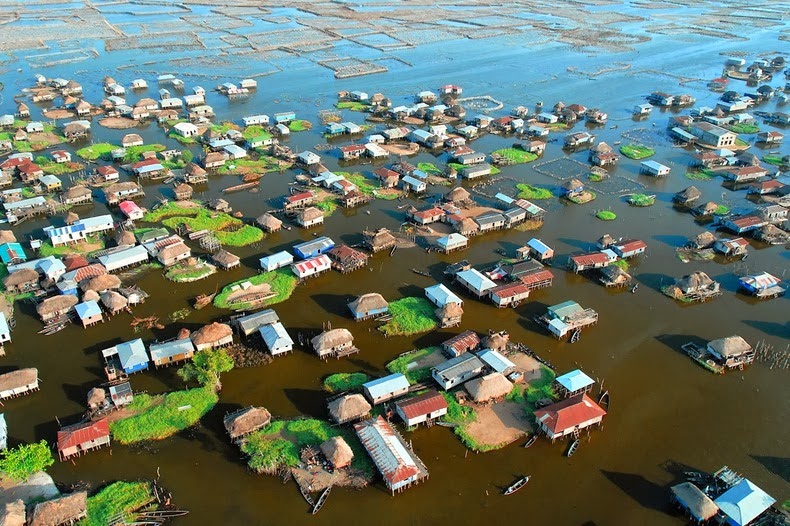
Ganvie is a remarkable stilt village situated on Lake Nokoué, often referred to as the “Venice of Africa.” The village is home to thousands of residents who have built their homes, schools, and businesses on wooden stilts, creating a unique and vibrant community.
- How to Get There:
- Public Transport: From Cotonou, travelers can take a taxi or motorcycle to Abomey-Calavi, where boats depart for Ganvie. The boat journey takes approximately 30 minutes to 1 hour depending on weather conditions.
- Private Transport: Visitors can also hire a private boat or join a guided tour from Cotonou for a more comfortable and customized experience.
- Transportation Cost: Public transport from Cotonou to Abomey-Calavi typically costs around XOF 1,000-2,000 (USD 2-3) per person, with boat fees ranging from XOF 5,000-10,000 (USD 8-17) per person. Private tours may range from XOF 20,000-30,000 (USD 33-50) per person.
- Must-Do Activities: Boat tours of Ganvie to explore the stilt village and interact with local residents, shopping for handicrafts and souvenirs, and enjoying fresh seafood at local restaurants.
- Entrance Fee: There is no formal entrance fee for visiting Ganvie, but boat tour fees may apply.
5. W National Park:
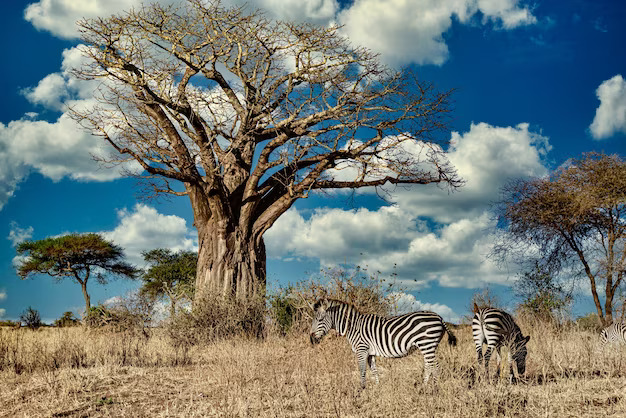
W National Park is a transboundary conservation area shared between Benin, Niger, and Burkina Faso, known for its diverse ecosystems and wildlife species. Visitors can embark on safari drives, birdwatching excursions, and nature walks to explore the park’s natural beauty and biodiversity.
- How to Get There:
- Public Transport: From Cotonou, travelers can take a bus or shared taxi to Tanguiéta, which is approximately 650 kilometers away. From Tanguiéta, arrangements can be made for transport to W National Park.
- Private Transport: Alternatively, visitors can hire a private car or join a guided tour from Cotonou for a more convenient and direct journey to the park.
- Transportation Cost: Public transport from Cotonou to Tanguiéta typically costs around XOF 15,000-20,000 (USD 25-33) per person, with additional fees for transport to the park. Private tours can range from XOF 150,000-200,000 (USD 250-330) per person.
- Must-Do Activities: Wildlife safaris to spot elephants, hippos, and other animals, birdwatching to observe a
- Entrance Fee: The entrance fee for W National Park in Benin is approximately XOF 5,000-10,000 (USD 8-17) per person.
What Mysteries Await at These 5 Hidden Destinations in Benin?
1. Taneka Village:
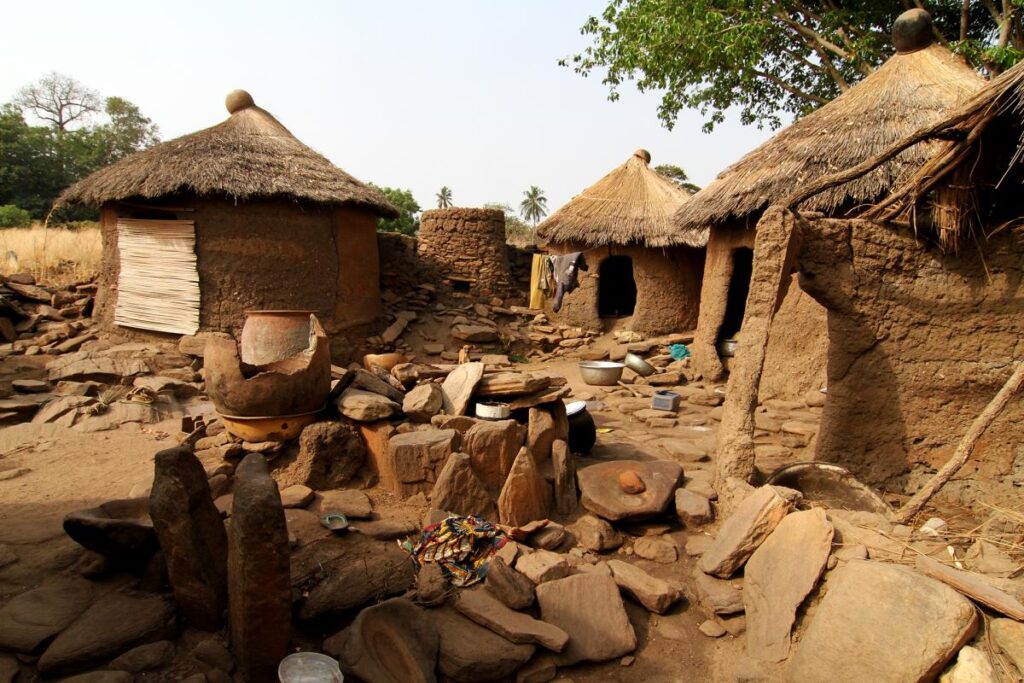
Nestled in the heart of Benin, Taneka Village offers visitors a rare glimpse into the rich cultural heritage of the Taneka people. This traditional village is renowned for its unique architecture, characterized by intricately designed mud houses adorned with vibrant patterns and symbols. Taneka Village is also famous for its colorful festivals, where locals showcase traditional dances, music, and rituals.
- How to Get There:
- Public Transport: From Cotonou, travelers can take a bus or shared taxi to Parakou, which serves as the gateway to Taneka Village. From Parakou, hire a local taxi or motorcycle to reach the village.
- Private Transport: Alternatively, visitors can hire a private car or join a guided tour for a more personalized and comfortable journey.
- Transportation Cost: Public transport from Cotonou to Parakou typically costs around XOF 7,000-10,000 (USD 12-17) per person. Local transport from Parakou to Taneka Village may range from XOF 5,000-10,000 (USD 8-17) per person.
- Must-Do Activities: Participate in traditional Taneka festivals, interact with locals to learn about their customs and way of life, and explore the intricately designed mud houses.
- Entrance Fee: There is usually no formal entrance fee for visiting Taneka Village.
2. Somba Village of the Atakora Mountains:
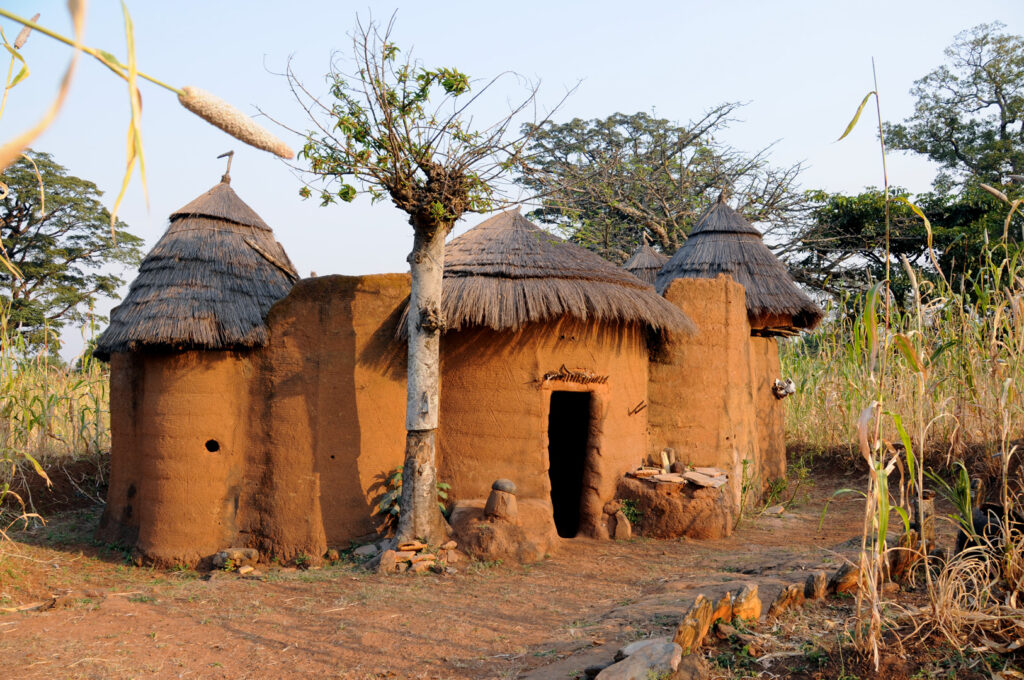
Tucked away in the scenic Atakora Mountains, Somba Village offers travelers a unique cultural experience unlike any other. This remote village is renowned for its distinctive Tata Somba houses, which are traditional fortified dwellings built from clay, straw, and wood. Visitors can marvel at the architecture, interact with friendly locals, and immerse themselves in the timeless traditions of the Somba people.
- How to Get There:
- Public Transport: From Cotonou, travelers can take a bus or shared taxi to Natitingou, the gateway to the Atakora Mountains. From Natitingou, hire a local taxi or motorcycle to reach Somba Village.
- Private Transport: For a more convenient and flexible journey, travelers can hire a private car or join a guided tour from Cotonou to Somba Village.
- Transportation Cost: Public transport from Cotonou to Natitingou costs around XOF 10,000-15,000 (USD 17-25) per person. Local transport from Natitingou to Somba Village may range from XOF 5,000-10,000 (USD 8-17) per person.
- Must-Do Activities: Explore the unique Tata Somba houses, hike through the breathtaking landscapes of the Atakora Mountains, and engage with the welcoming Somba community.
- Entrance Fee: There is usually no formal entrance fee for visiting Somba Village.
3. Dassa-Zoumè Sacred Forest:
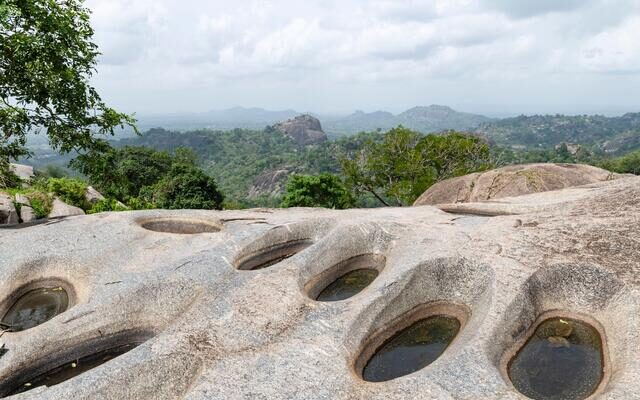
The Dassa-Zoumè Sacred Forest is a hidden sanctuary of natural beauty and spiritual significance. This ancient forest is home to a diverse array of flora and fauna, including towering trees, medicinal plants, and sacred shrines. Visitors can wander along tranquil pathways, participate in traditional rituals led by local guides, and gain insight into the spiritual beliefs and practices of the Beninese people.
- How to Get There:
- Public Transport: From Cotonou, travelers can take a bus or shared taxi to Dassa-Zoumè, the gateway to the Sacred Forest. From Dassa-Zoumè, hire a local taxi or motorcycle to reach the forest.
- Private Transport: For a more comfortable and direct journey, travelers can hire a private car or join a guided tour from Cotonou to the Sacred Forest.
- Transportation Cost: Public transport from Cotonou to Dassa-Zoumè costs around XOF 5,000-7,000 (USD 8-12) per person. Local transport from Dassa-Zoumè to the Sacred Forest may range from XOF 2,000-5,000 (USD 3-8) per person.
- Must-Do Activities: Take a guided tour of the Sacred Forest, participate in traditional rituals led by local guides, and enjoy a peaceful nature walk amidst the ancient trees.
- Entrance Fee: There is usually no formal entrance fee for visiting the Dassa-Zoumè Sacred Forest.
4. Ouémé River Delta:
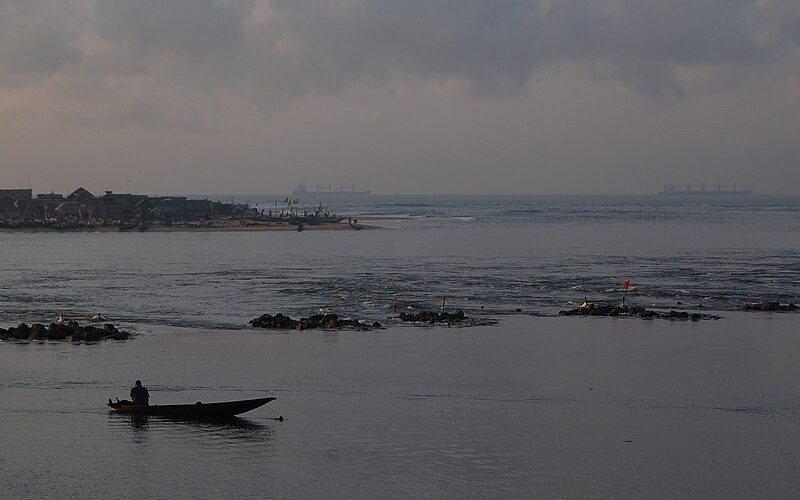
The Ouémé River Delta is a hidden gem of natural beauty and biodiversity. This sprawling wetland ecosystem is teeming with birdlife, aquatic species, and lush mangrove forests. Travelers can explore the delta by boat, gliding along winding waterways, and observing the vibrant birdlife that inhabits the area. Fishing enthusiasts can also try their luck in the delta’s pristine waters, casting their lines for a chance to reel in a variety of local fish species.
- How to Get There:
- Public Transport: From Cotonou, travelers can take a bus or shared taxi to Porto-Novo, the gateway to the Ouémé River Delta. From Porto-Novo, hire a local boat or canoe to explore the delta.
- Private Transport: For a more personalized and convenient experience, travelers can hire a private boat or join a guided eco-tour from Cotonou to the Ouémé River Delta.
- Transportation Cost: Public transport from Cotonou to Porto-Novo costs around XOF 1,000-2,000 (USD 2-3) per person. Local boat rentals for exploring the Ouémé River Delta may range from XOF 5,000-10,000 (USD 8-17) per person.
- Must-Do Activities: Birdwatching in the delta to spot a diverse array of bird species, fishing for local fish species, and exploring the tranquil mangrove forests by boat.
- Entrance Fee: There is usually no formal entrance fee for exploring the Ouémé River Delta.
5. Grand-Popo Beaches and Fishing Villages:
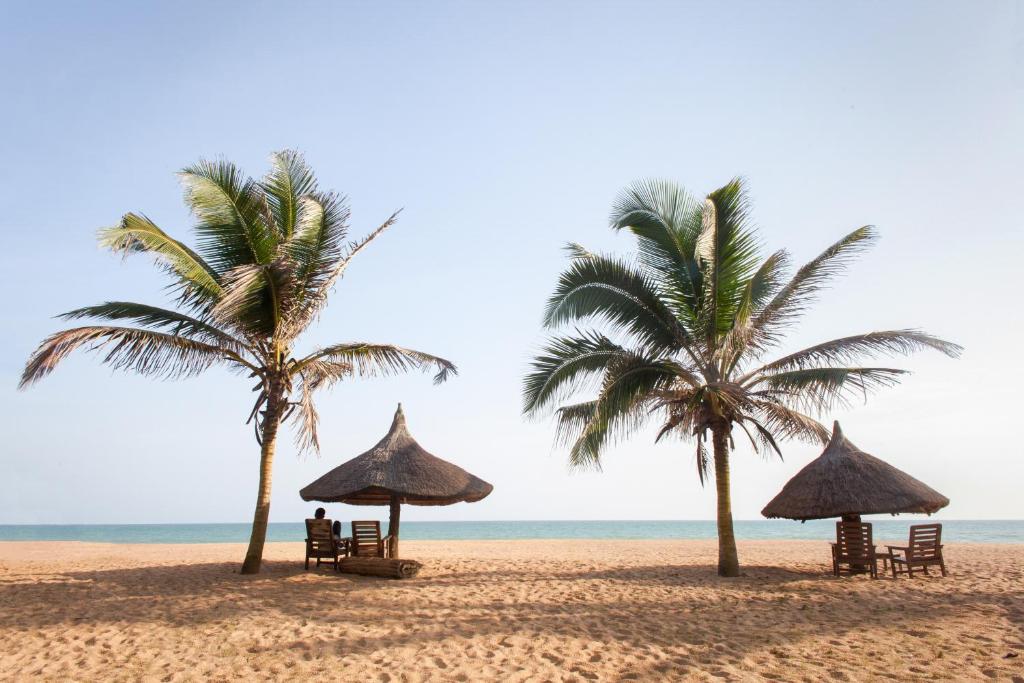
Grand-Popo is a hidden coastal gem known for its pristine beaches, colorful fishing villages, and laid-back atmosphere. Travelers can unwind on sandy shores, swim in crystal-clear waters, and immerse themselves in the vibrant culture of local fishing communities. Wander through picturesque villages, where brightly painted boats line the shores, and friendly locals welcome visitors with open arms.
- How to Get There:
- Public Transport: From Cotonou, travelers can take a bus or shared taxi to Grand-Popo, the gateway to the region’s beaches and fishing villages. Once in Grand-Popo, explore the area on foot or by bicycle.
- Private Transport: For a more comfortable and flexible journey, travelers can hire a private car or join a guided tour from Cotonou to Grand-Popo.
- Transportation Cost: Public transport from Cotonou to Grand-Popo costs around XOF 2,000-3,000 (USD 3-5) per person. Bicycle rentals for exploring the area may range from XOF 1,000-2,000 (USD 2-3) per person.
- Must-Do Activities: Relaxing on the pristine beaches of Grand-Popo, exploring colorful fishing villages, and experiencing the warm hospitality of local communities.
- Entrance Fee: There is usually no formal entrance fee for visiting Grand-Popo beaches and fishing villages.
Transport: How to get there and roam around in Benin?
For budget-conscious travelers, flying into Cotonou and then utilizing local transportation within Benin is often the most convenient and cost-effective option. However, adventurous backpackers may opt for overland travel, crossing borders via bus or shared taxis from nearby countries. While this approach may require more time and flexibility, it offers an immersive experience of the region’s diverse landscapes and cultures.
Modes of Transport and Passes for Travelers
Within Benin, several modes of transportation cater to the needs of both locals and travelers alike. From bustling city streets to rural villages, here are the primary transportation options available:
- Zemidjan (Motorcycle Taxis): Zemidjans are ubiquitous in Benin, providing quick and affordable transport within cities and towns. While they offer convenience, it’s essential to negotiate fares upfront and ensure safety by wearing helmets.
- Shared Taxis: Shared taxis are a popular mode of transport for longer journeys between cities and towns. Passengers share the vehicle with others, making it a cost-effective option for budget travelers. However, be prepared for crowded conditions and occasional delays.
- Buses: Several bus companies operate routes connecting major cities and towns across Benin. While buses offer a more comfortable and spacious option compared to shared taxis, they may be less frequent and prone to overcrowding during peak hours.
- Bush Taxis: For travelers venturing off the beaten path, bush taxis provide access to remote villages and rural areas. These shared vehicles navigate unpaved roads and rugged terrain, offering an authentic glimpse into Benin’s countryside.
- Ferries: Given Benin’s coastal location, ferries are essential for crossing rivers and reaching islands like Ganvie. These watercraft provide an adventurous mode of transport, allowing travelers to soak in scenic views and witness local life along riverbanks.
Costs for Beninese People and Tourists
Transportation costs in Benin vary depending on the mode of transport, distance traveled, and negotiation skills. As a general guideline, here’s an overview of typical fares for each mode of transportation:
- Zemidjan (Motorcycle Taxi): XOF 300-1000 per short ride within cities.
- Shared Taxi: XOF 500-2000 for intercity travel, depending on distance.
- Bus: XOF 1000-5000 for longer journeys between major cities.
- Bush Taxi: XOF 2000-8000 for rural routes and off-road travel.
- Ferry: XOF 500-2000 for river crossings and island visits.
While prices may be slightly higher for tourists, bargaining is common, especially for informal modes of transport like zemidjans and shared taxis. It’s advisable to inquire about fares upfront and negotiate when necessary to ensure fair pricing.
Quality of Travel and Potential Difficulties
While Benin’s transportation network is extensive and diverse, it’s essential to be aware of potential challenges and difficulties that travelers may encounter:
- Safety Concerns: Some modes of transport, particularly zemidjans and shared taxis, may prioritize speed over safety. Travelers should exercise caution and ensure that vehicles are well-maintained and driven by licensed operators.
- Language Barrier: Communicating with drivers and fellow passengers may pose challenges for travelers who do not speak French or local languages. Learning basic phrases or traveling with a guide can help overcome language barriers.
- Infrastructure Limitations: In rural areas, infrastructure may be rudimentary, with unpaved roads and limited access to public transportation. Travelers should be prepared for bumpy rides and occasional delays, especially during the rainy season when roads may become impassable.
Traveling to Benin on a Budget: What Visa Requirements, Money-Saving Tips, and Local Insights Should You Know?
Visa Process and Restrictions:
- Visa requirements for Benin vary depending on your nationality. Most travelers require a visa to enter Benin, which can be obtained from Beninese embassies or consulates abroad. Alternatively, some nationalities are eligible for visa-on-arrival, allowing for easier entry.
- Having a Schengen or American visa may facilitate the visa application process for Benin, as it demonstrates your previous travel history and adherence to visa regulations in other countries.
- It’s essential to check the latest visa requirements and regulations before traveling to Benin to avoid any issues upon arrival.
Things We Shouldn’t Do When We Go There:
- Avoid discussing sensitive political or religious topics, as these conversations may be considered disrespectful or offensive.
- Refrain from photographing military installations or personnel without permission, as this may be prohibited and could lead to complications.
- Be mindful of local customs and traditions, such as greetings and gestures, to show respect for Beninese culture.
Currency and Tips to Save Money:
- The official currency of Benin is the West African CFA franc (XOF). It’s advisable to exchange currency at banks or authorized exchange offices for the best rates.
- To save money, consider bargaining when shopping in local markets or when negotiating transportation fares.
- Opt for street food or local eateries for budget-friendly dining experiences, where you can sample authentic Beninese cuisine at lower prices.
Budget Accommodations and Locations:
- Budget travelers can find affordable accommodations in guesthouses, hostels, and budget hotels in major cities like Cotonou, Porto-Novo, and Parakou.
- Areas like Ganvie, Grand-Popo, and Ouidah offer budget-friendly beachside accommodations, providing a unique and scenic stay for travelers on a budget.
- Consider booking accommodations in advance through online platforms or inquire about discounts for extended stays to save money on lodging expenses.
Local SIM Provider and Best Plan for Tourists:
- MTN and Moov are two of the main mobile network providers in Benin, offering prepaid SIM cards for tourists.
- Tourists can purchase SIM cards at local shops, supermarkets, or directly from provider stores by presenting their passport for registration.
- Opt for prepaid data plans with adequate data allowances for staying connected during your travels. Prices for data plans vary depending on the provider and data allocation.
Basic Words in Local Language:
- Hello – Bonjour
- Thank you – Merci
- Please – S’il vous plaît
- Yes – Oui
- No – Non
- Goodbye – Au revoir
- How much? – Combien ça coûte?
- Where is…? – Où est…?
Local Cuisine and Must-Try Foods:
- Must-try Beninese dishes include:
- Fufu and Sauce: A staple dish made from pounded cassava or yam served with a flavorful sauce.
- Peanut Sauce: A rich and creamy sauce made from ground peanuts, often served with rice or grilled meat.
- Akassa: Fermented corn pudding, typically enjoyed with spicy sauces or grilled fish.
- Grilled Fish: Freshly caught fish seasoned with spices and grilled over open flames, a popular street food option.
- Prices for local cuisine vary depending on the establishment, but street food vendors and local eateries offer affordable options for budget travelers to sample authentic Beninese flavors.
Want to know what modern-day Benin looks like?
Political Landscape: Benin, a West African nation known for its vibrant democracy, continues to uphold its reputation for political stability. With regular elections and peaceful transitions of power, Benin stands out as a beacon of democracy in the region. However, recent years have seen some political tensions and controversies, particularly surrounding electoral processes and the concentration of power.
President Patrice Talon, who came into power in 2016, has pursued an ambitious agenda aimed at modernizing the country and boosting economic development. His administration has focused on initiatives to improve governance, fight corruption, and attract foreign investment. Despite these efforts, critics have raised concerns about political freedoms and human rights, citing instances of crackdowns on dissent and opposition voices.
Economic Landscape: Benin’s economy is predominantly agrarian, with agriculture employing a significant portion of the population. The country’s key agricultural exports include cotton, cashews, and palm oil. In recent years, Benin has made strides in diversifying its economy, with sectors such as manufacturing, telecommunications, and trade playing increasingly important roles.
The government has implemented reforms to improve the business environment and stimulate economic growth. Initiatives to enhance infrastructure, such as the ongoing development of the Port of Cotonou and transportation networks, aim to bolster trade and attract investment. Additionally, Benin has sought to strengthen regional cooperation through initiatives like the West African Power Pool (WAPP) and the African Continental Free Trade Area (AfCFTA).
Recent Developments and Initiatives: In recent years, Benin has embarked on several initiatives to promote growth and development across various sectors. These include:
- Infrastructure Development: The government has invested in infrastructure projects, including road construction, port expansion, and energy infrastructure upgrades, to facilitate trade and foster economic growth.
- Digital Innovation: Benin has embraced digital technology as a driver of economic development, with initiatives to expand access to broadband internet, promote e-commerce, and enhance digital literacy.
- Youth Empowerment: Recognizing the importance of youth in driving future progress, the government has launched programs to support entrepreneurship, skills development, and job creation for young people.
- Environmental Sustainability: Benin has taken steps to address environmental challenges, including deforestation, land degradation, and climate change. Initiatives to promote sustainable agriculture and conservation aim to protect the country’s natural resources for future generations.
Challenges and Issues: Despite its progress, Benin faces several challenges that hinder its development:
- Poverty and Inequality: Despite economic growth, poverty remains widespread, particularly in rural areas. Addressing income inequality and improving access to education, healthcare, and social services are ongoing challenges.
- Corruption and Governance: Corruption continues to pose a significant obstacle to development, undermining public trust and hampering efforts to improve governance and accountability.
- Infrastructure Deficits: Benin’s infrastructure deficits, including inadequate transportation networks and limited access to electricity and clean water, constrain economic growth and development.
- Youth Unemployment: High youth unemployment rates pose a risk to social stability and economic progress. Addressing youth unemployment requires targeted policies to promote job creation and skills development.
Wanderer’s Word
In wrapping up our exploration of modern-day Benin, it’s evident that this West African nation holds a captivating blend of promise and challenge for budget-conscious travelers like us. From its resilient democracy to its ongoing economic transformation, Benin presents a tapestry of progress marked by both strides forward and hurdles to overcome. Recent initiatives aimed at fostering growth underscore the government’s commitment to development, yet persistent issues such as poverty, corruption, and infrastructure deficits remind us of the complexities at play. As we navigate this dynamic landscape, let us approach our journey with curiosity and respect, embracing the opportunities for discovery and connection that await in Benin’s rich cultural heritage, vibrant communities, and stunning natural landscapes. In bidding farewell to this exploration, may we carry forward a deeper understanding of Benin’s complexities and a renewed appreciation for the resilience and aspirations of its people.
“Every journey begins with a single step.”
